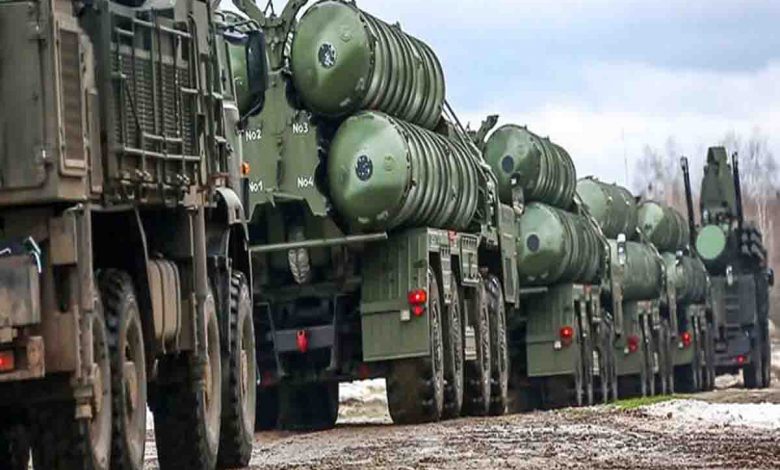The looming threat of hunger & famine

Monday, 04 July 2022 | Vir Singh | in Guest Column
GUEST COLUMN

A dismal global spectre of famine and hunger is in evolution. On February 24, 2022, when Russia launched a comprehensive invasion of Ukraine, no one had anticipated such a tragedy in the world emerging from this food-rich region. A large proportion of global exports of wheat, maize, soy, sunflower and barley come from this war-torn region. Many developing countries dependent on imports are the main export markets of both the nations at war- Russia and Ukraine. In March, just days after the Russo-Ukraine war, the FAO global food price index touched new all-time highs, reaching an average of 159.3 points, breaking the February 2011 record of 137.6 points. Food prices in many of the world’s import-dependent developing countries have soared. Their food stores have also started to become empty and famine has set in.
The Russo-Ukraine War is unique in that the effects of food shortages, poverty and hunger are going to be greater in the rest of the world than in the war zone. The growth in food production in these two countries has been impressive, so the world, especially the food import-dependent countries, has not yet faced a food security crisis. Reduced crop yields due to drought and extreme climate change have exacerbated the prospects of hunger and famine in developing countries. So many lives have been lost to the Russian invasion and so many will be lost to the unabated war; but there are still many more people away from these two countries who will be silently succumbing to the famine.
Revolution is often born out of hunger. History from the French Revolution to the Arab Spring has taught that compromising the ability to feed the masses gives rise to an unbearable resentment. What will happen to developing countries this year where food prices have increased manifold and continue to rise and the basic necessities of life are out of reach of a vast majority of the population? Will this population blame the Russian invasion or will the people rise up against their own governments? In Sri Lanka, people are not raising abusive slogans against Putin, nor are they burning Russian flags. There is also an old political saying: The hungry people eat their rulers!
Starvation is the most brutal weapon of war in war zones. West Africa’s Biafra is a glaring example in the world’s living memory. Biafra was an independent nation from 1967 to 1970, separated from Nigeria. In the Nigerian Civil War, also known as the Nigeria–Biafra War, more than two million people in Biafra, of whom three-quarters were children, died of hunger as Nigeria blocked the supply of food to the people of Biafra. But this is not the last incident related to the barbaric past of the world. New United Nations data show that 60 per cent of the 815 million people who suffer from malnutrition live in war zones. Today we see, countries battling conflicts and terrorism like Yemen, Ethiopia, Sri Lanka, Pakistan and Afghanistan are emerging as “hunger hotspots”.
The Holodomor, a starvation ploy, was engineered in 1932–33 against the people of Ukraine, then a state of USSR. In Ukrainian language, ‘Holodomor’ literally means ‘death by hunger’ or ‘killing by hunger’. Ukraine was a leading state in food production in the then Soviet Union. In the year 1932-33, the number of people killed by the famine that hit this state was estimated in 2003 in a letter signed by 25 members of the United Nations, in which the number of people who lost lives due to starvation ranged from seven to ten million. The famine was not natural; it was Holodomor, which is said to have been caused by Joseph Stalin to crush the Ukrainians’ love for freedom. Food abundance is still considered the most important indicator of prosperity in Ukraine as an independent nation. And, now, after 90 years, Holodomor is once again on the verge of recreating itself in Ukraine. And this time the genocide-blended Holodomor is being enacted in the shadow of Vladimir Putin’s bayonets.
Worldwide events of the year 2022-23 will prove that the era of food prosperity has come to an end. New challenges are also emerging from wars and conflicts over world food security. The biggest challenges are to be faced by agricultural research institutions worldwide. The need for addressing the emerging crises becomes even stronger when the western regions of Canada, the United States and Argentina, which have always been saturated with food security, are facing unprecedented drought conditions, and climate change is looming large on the planet. Any tragedy gives a new twist to history. In every tragedy new hope also blooms. When a nation recovers from a famine or a food crisis, it first strengthens its food production systems, changes policies and infuses new hopes among its people. After World War II, agricultural produce exploded in North America and Europe through advanced technologies. “Food for peace” was the basic mantra of the nations engaged in war for years. Countries that attained the pinnacle of food affluence after World War II now fear food scarcity and, foreseeing the future of famine, are now formulating new strategies to sustain their food security status. The developed countries from which the developing nations were able to ensure the food security of their people by importing food, are now looking for help from India. The whole of Europe is hoping that due to the Russo-Ukraine war, they would import wheat from India. The International Monetary Fund (IMF), on which countries of the world depend to overcome their recession and hunger, is itself urging India to export food grains to countries on the verge of starvation.
In the global scenario emerging from the current food crisis, India has emerged as a world saviour. This is a golden opportunity for India to revive the slowly dying agrarian dominance, taking inspiration from the golden age of its basic agriculture-centred culture. Resurgence of Indian agri-“culture” will re-green the fate of the farmers who constitute the largest proportion of the Indian populace. Agriculture, after all, is all set to evolve into the most promising industry of the future.
(The author is emeritus professor of Environmental Science, GB Pant University of Agriculture and Technology. Views expressed are personal)






